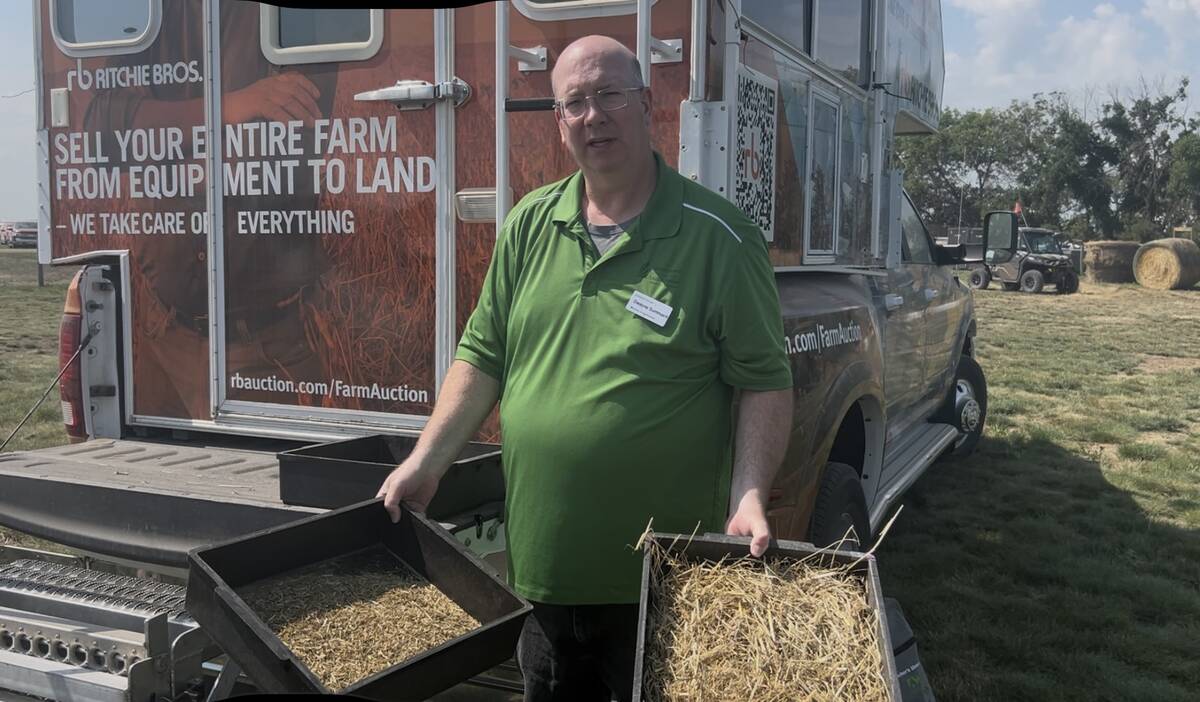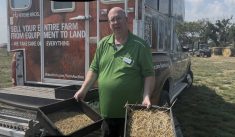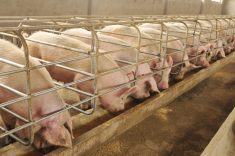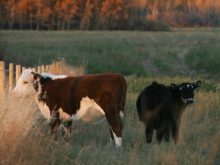LETHBRIDGE – Two herds of animals deliberately infected with BSE and chronic wasting disease could unlock some of the mysteries of these fatal brain disorders.
Isolated at the Canadian Food Inspection Agency animal disease research laboratory west of Lethbridge, five calves and five elk received doses of infected material so scientists can watch the disease progression.
The cattle received doses of BSE directly to the brain through a surgical procedure under general anesthetic, while the elk received chronic wasting disease orally.
“We use the British model and the British have been 100 percent successful in creating BSE by this technique, so we are quite convinced all five of these calves will develop BSE,” said Stacy Tessaro, head of virology and quality assurance at the station.
Read Also

VIDEO: How to check your feed mixer’s efficiency
Dwayne Summach, livestock and feed extension specialist with the Saskatchewan Ministry of Agriculture, showed visitors at Ag in Motion 2025 how to use the Penn State Particle Size Separator to check the efficiency and performance of your total mixed ration feed mixers.
The calves were infected after weaning and are almost a year old. There is little infective material available for research so these animals are of considerable interest to the international scientific community studying prion diseases.
“A positive animal becomes very valuable for research,” he recently told a tour group.
“By experimentally infecting this small group of cattle, we will have a variety of live animal samples taken at sequential periods throughout the infection that we will be able to use for research,” said Tessaro.
Blood and urine samples as well as swabs are collected regularly and tested for signs of disease. As scientists learn more about the disease from these samples, they might be able to produce a live test and enhance information about BSE’s progress.
If an animal never develops the disease, it will eventually be killed and the brain examined.
All animal wastes will be removed and cooked at a high temperature and pressure to kill infectious agents. These animals will live in isolation for the duration of the research.
The work with elk follows research started by Beth Williams of Wyoming University, who was studying this disease with artificially infected elk but died in a car accident two years ago. She recommended the Canadians study the full lifespan of the animals to more fully understand the disease path.
Besides disease research, the Lethbridge facility is the busiest BSE testing lab in Canada, handling about one third of all the specimens examined in the country. In 2004, Canada sampled 23,000 samples, of which more than 9,000 were done at this centre. Samples come from CFIA and private veterinarians as well as rendering companies.
The western blot test is used to test for BSE, CWD and scrapie.
This lab also handles rabies testing for Western Canada. If a questionable sample is delivered, it could be tested for BSE and rabies because both are neurological diseases affecting different parts of the brain.
If a positive BSE test is discovered, it must be submitted to the national laboratory in Winnipeg. All three Alberta cases were initially diagnosed in Edmonton at the provincial laboratory.
The Lethbridge lab was involved in the testing and destruction of the animals connected to Canada’s first domestic case in May 2003 in Alberta’s Peace River district. The entire index herd and a number of related animals totalling 369 were brought to the centre, destroyed, individually labelled and sampled.
All were negative, so the carcasses were rendered to reduce the volume because the animals had to be handled within 24 hours of death. The remaining material was shipped to a waste facility in Swan Hills, Alta., for further incineration and disposal.
The Lethbridge facility was also involved when Canada discovered a BSE case in 1993 in a six-year-old imported British cow near Red Deer.
At that time the index herd and some additional British imports were collected, euthanized, tested and incinerated at Lethbridge. Operations at the time were considerably slower. Incineration of carcasses took three months because they did not have enough space to handle more than a few per day. Upgrades have been made since then to handle rapid tests and destruction of carcasses if necessary.

















